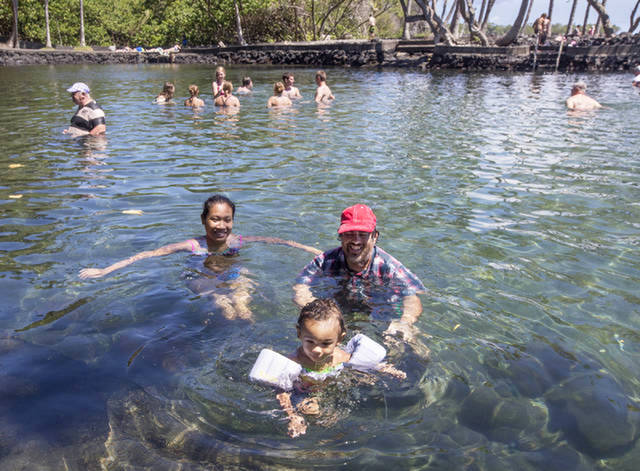HILO — Ahalanui Beach Park may be the next area threatened by lava as the flow front in lower Puna inches southward toward Warm Ponds.
The southern edge of the lava flow from fissure 8 reached less than a mile from Ahalanui by Monday, having shifted nearly 3,000 feet within the previous five days.
U.S. Geological Survey geophysicist Jim Kauahikaua reportedly estimated early Monday that the lava could reach the park within the week if it continues at its previous rate. However, Mike Zoeller, a geologist with the University of Hawaii at Hilo’s Center for the Study of Active Volcanoes, said that the rate of the flow moving southward from Kapoho has slowed since the weekend.
Within the channel, the highest recorded speed of the lava was approximately 21 miles per hour, Zoeller said.
The flow now extends over nearly 10 square miles, Zoeller said, but has so far not suffered a major overflow. Some collapses at the tops of the lava channel walls have occurred, causing small lava streams to leave the channel and travel away from the primary flow.
However, Zoeller said that major failures of the levee walls are possible and have historical precedent, so USGS is continually monitoring the channel to identify and warn about possible outbreaks.
Zoeller said some of the fissures to the northeast of fissure 8 — which remains the prime driver of the ongoing lava flow — might be active to some capacity but that cannot be confirmed because of the high amount of gas emitted in the area, which has reached up to 25,000 tons of sulfur dioxide a day. Fissures 6, 16, 18 and 22, all of which are northeast of fissure 8, have been weakly active in the last several days.
The deformation of terrain around Kilauea summit continues, with semi-regular pressure-driven explosions driving significant slumping of the ground around Halema‘uma‘u.


